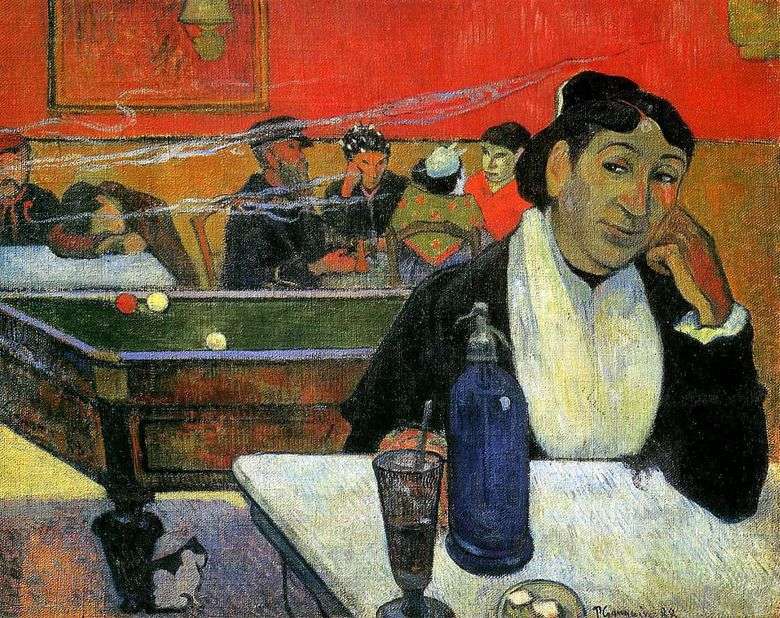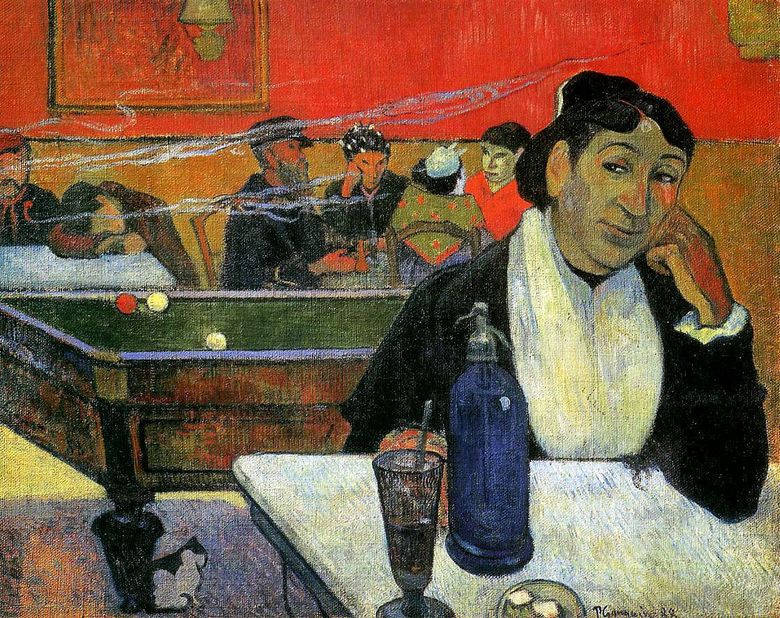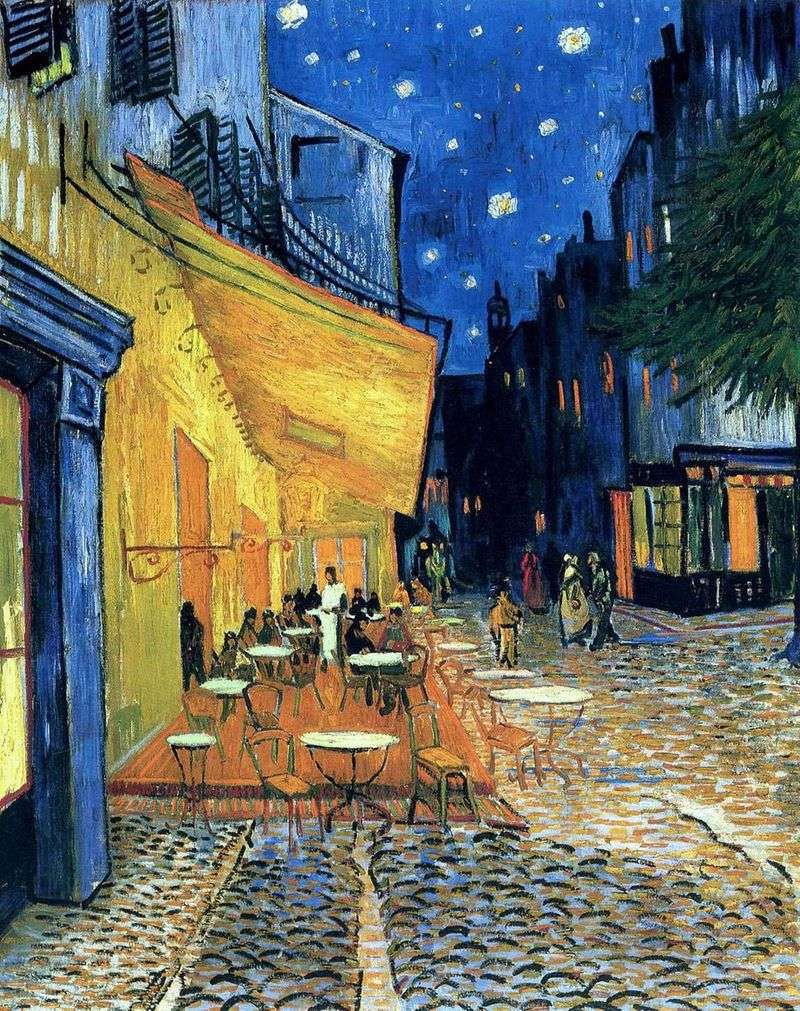
One of the famous works of Paul Gauguin can be considered the canvas “Cafe in Arles.” The painting was written in 1888 and is currently kept in the State Museum of Fine Arts. A. Pushkin in Moscow.
The picture is interesting from the point of view of composition and recalls in its manner the way of portraying Van Gogh. The canvas is characterized by color contrasts, bright saturated hues, a black insistent contour, reduced volume and almost flat drawing.
The drawing turned out to be primitive, without detailing and weighting details.
In the foreground of the picture on the right is a woman leaning her elbows on the white surface of the table. Before us is Madame Gina, the wife of the owner of the cafe. It should be noted that here we can notice the distortion of proportions, the exaggeration of the parameters of objects, their deliberate exaggeration with a violation of the perspective image. Items on the table in front of a woman look unusually and detached, just an independent image.
The female image in the foreground of the picture is mysterious, akin to the Jokond, with a hidden sense state that is hardly identifiable. Black and white clothes give Madame Zhinu an image of categoricalness, and a shadow of fatigue and some emotional fatigue slip on her face.
Somewhat further, a billiard table is depicted, and even further visitors to cafes, different, but nevertheless, typical for such kind of institutions.
The billiard table is presented to the empty, which further emphasizes its massive and disproportionate. The image of the table balances the compositional construction of the canvas, preventing one image from capturing the entire picture structure, thereby creating proportional distortions.
The back of the canvas is more filled with images and details. A few visitors and regulars of the cafe are generalized, hardly marked and almost merge into one bright multi-colored spot. Over the company of visitors are twisted streams of smoke, giving the atmosphere a cafe of illusory and illusory, unreality.
Despite the very bright colors with which the space of the cafe is molded, nevertheless there is an atmosphere of indifference and longing, indifference and oblivion. Exactly through the turbid glass before us the outlines of the main images of the canvas, visitors to a cafe in one of the towns in the south of France, appear.
 Night Cafe, Arles (Night Cafe en Arles) – Paul Gauguin
Night Cafe, Arles (Night Cafe en Arles) – Paul Gauguin Café de nuit, Arles (Café de nuit à Arles) – Paul Gauguin
Café de nuit, Arles (Café de nuit à Arles) – Paul Gauguin Night Cafe at the Lamartine Square in Arles by Vincent Van Gogh
Night Cafe at the Lamartine Square in Arles by Vincent Van Gogh Terrace cafe in the Forum Square in Arles, at night by Vincent Van Gogh
Terrace cafe in the Forum Square in Arles, at night by Vincent Van Gogh The Night Cafe by Vincent Van Gogh
The Night Cafe by Vincent Van Gogh Cafe Terrace At Night by Vincent Van Gogh
Cafe Terrace At Night by Vincent Van Gogh Portrait of Madame Gauguin in an Evening Dress by Paul Gauguin
Portrait of Madame Gauguin in an Evening Dress by Paul Gauguin Landscape with peacocks by Paul Gauguin
Landscape with peacocks by Paul Gauguin